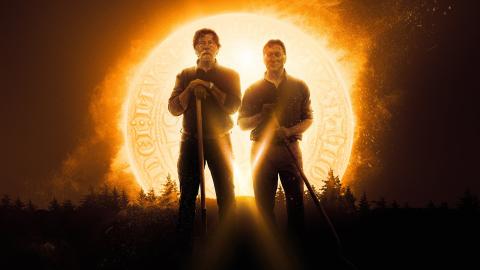Leonardo da Vinci: master of invention
This is an exclusive extract from Scientifica Historica: How the World's Great Science Books Chart the History of Knowledge by Brian Clegg, published by Ivy Press, RRP £25. To order a copy, visit: https://amzn.to/2lGcVvJ
First, though, we need to take a step back to a collection of old-style handwritten books that introduced no new scientific facts, but that are iconic in the history of science and technology. These are the notebooks of Leonardo da Vinci. His work marks perfectly the transitional period between the old and the new – the notebooks were produced after moveable type was invented, but were handwritten and never intended for publication – yet Leonardo’s work was amongst the first where the visual nature of some of the content makes it as attractive to the non-technical reader as is it is to the engineer. This is doubly ironic as Leonardo appeared to go out of his way to make his texts inaccessible, often working in mirror writing and making notes that were intended for his eyes only.
In some ways, Leonardo’s approach is reminiscent of the view put across by Roger Bacon, the thirteenth-century English friar. As Bacon stated, ‘The cause of the obscurity in the writings of all wise men has been that the crowd derides and neglects the secrets of wisdom and knows nothing of the use of these exceedingly important matters. And, if by chance, any magnificent truth falls to its notice, it seizes upon it and abuses it to the manifold disadvantage of persons and of the community.’ This is quoted from a short work with a long title, thought to be written about 1250: De Mirabile Potestate Artis et Naturae (in full, its title translates as ‘Letter Concerning the Marvellous Power of Art and of Nature and Concerning the Nullity of Magic’). The main content of the letter is a critique of fraudsters who pretend to do magic, contrasting this with the wonders of nature and science that Bacon mostly claimed to have observed. However, he also described a series of mechanisms for ensuring that knowledge is kept to the elite few and not made available to the masses.
Some such writing, Bacon said, is ‘hidden under characters and symbols, others in enigmatical and figurative expressions’. So, he was suggesting, it was possible to use ciphers, or such elliptical language that only those in the know could follow what was being said (a familiar approach to Bacon from the parables in the Bible). He then, as illustration, went on to describe the manufacture of gunpowder several times, using a range of wording that can be hard to follow and finished with an encrypted phrase that has never been satisfactorily decoded. We can see in Leonardo’s notebooks that same urge to keep the secrets of his discoveries and inventions from ordinary people. And what a remarkable series of books this produced.
Born in the town of Vinci, near Florence in Italy, in 1452, Leonardo started out in 1476 as an assistant to the artist Andrea del Verroccio, and would go on to have the definitive Renaissance career as an artist, inventor and engineer. His notebooks were voluminous. Through to his death in 1519, he wrote the equivalent of around 20 books. When he was not sketching humans, animals, plants and geological features, he was devising technology. Leonardo first came to this through producing mechanisms for the stage, which at the time featured increasingly complex mechanisms to put on spectacles where actors floated through the air and new vistas opened up before the enthralled audience.
Leonardo’s notebooks range from detailed guidance on painting techniques (his pupil Francesco Melzi extracted material from the notebooks to produce a Treatise on Painting) to exploded diagrams for his mechanical devices. These included automata, such as a mechanical knight and a ‘self-driving’ cart with a mechanism to gradually increase its steer to the right during its movement. Biologically, he drew from dissections, took a particularly modern-feeling mechanical approach to his understanding of the workings of the body and dissected eyes to understand the optics of vision before pouring all of this into his notebooks. He even included many examples from Euclid’s Elements, illustrated in his own style.
Some of the most intricate and delightful illustrations in the notebooks show the workings of gears. These were in their relative infancy at the time, but Leonardo made use of everything from simple wheels with pegs around to sophisticated worm gears. The inventions he showed in his notebooks range from a diving suit to a form of tank, and his civil engineering included everything from canals to the design of sophisticated bridges. While Leonardo’s physics may have been little different from that of Aristotle, the presentation of it in his work transformed the subject.















